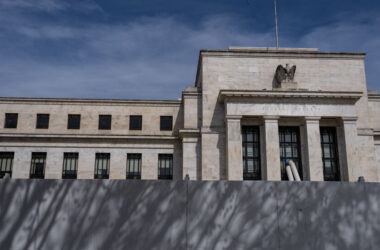The Federal Reserve’s preferred inflation measure continued to cool as consumer spending grew only moderately, good news for central bankers who have been trying to weigh down demand and wrestle price increases under control.
The Personal Consumption Expenditures index climbed 2.6 percent in May from a year earlier, matching what economists had forecast and down from 2.7 percent previously.
After stripping out volatile food and fuel prices to give a better sense of the inflation trend, a “core” price measure was also up 2.6 percent from a year ago, down from 2.8 percent in the April reading. And on a monthly basis, inflation was especially mild, and prices did not climb on an overall basis.
The Fed is likely to watch the fresh inflation data closely as central bankers think about their next policy steps. Officials raised interest rates sharply starting in 2022 to hit the brakes on consumer and business demand, which in turn can help to slow price increases. But they have held borrowing costs steady at 5.3 percent since July 2023 as inflation has slowly come down, and have been contemplating when to begin lowering interest rates.
While officials came into 2024 expecting to make several rate cuts this year, they have pushed those expectations back after inflation proved stubborn early in the year. Policymakers have suggested that they still think they could make one or two rate cuts before the end of the year, and investors now think that the first reduction could come in September.
Given Friday’s fresh inflation data, the sticky inflation early in 2024 looks “more and more like a bump in the road,” Omair Sharif, founder of Inflation Insights, wrote in note following the release. “However you want to slice and dice it, we’ve made considerable progress on core inflation over the last year.”
But whether a rate cut happens in the coming months hinges on what happens with economic data — both for prices and for the labor market.
Inflation remains above the Fed’s 2 percent target, but it is much slower than it was at its 2022 peak, when overall P.C.E. inflation hit 7.1 percent. And a separate but related measure, the Consumer Price Index, reached an even higher peak of 9.1 percent and has now come down sharply as well.
Fed officials have been clear that they will cut rates when inflation has decelerated enough to make them confident that it is coming fully under control, or if the job market shows an unexpected cooling.
Policymakers generally expect inflation to cool in the coming months, though some have expressed concern that the process could be halting.
“Much of the progress on inflation last year was due to supply-side improvements, including easing of supply chain constraints; increases in the number of available workers, due in part to immigration; and lower energy prices,” Michelle Bowman, a Fed governor, said in a speech this week. She suggested that those forces may offer less help going forward.
But other officials are nervously eyeing a slowdown that is beginning to grip the broader economy and that could soon hit the labor market, worried that keeping interest rates too high for too long could come at a cost to America’s workers by slowing growth too much.
Hiring has remained strong so far, and while wage growth is cooling, it is still robust. But some measures suggest that labor conditions are in fact weakening — job openings have come down notably, the unemployment rate has risen slightly and jobless claims have recently ticked up somewhat.
“The labor market has adjusted slowly, and the unemployment rate has only edged up,” Mary C. Daly, the president of the Federal Reserve Bank of San Francisco, said in a speech this week. “But we are getting nearer to a point where that benign outcome could be less likely.”
Friday’s report showed that consumer spending remained cool in May, further evidence that steam is coming out of the economy.
Diane Swonk, chief economist at KPMG, said that for now, conditions still look reasonably strong.
“Are we on thin ice yet? Not yet, and it does look like there is room to run,” she said, but she noted that the Fed must remain vigilant. “They want to cause a cooling of the economy, not a deep freeze.”






